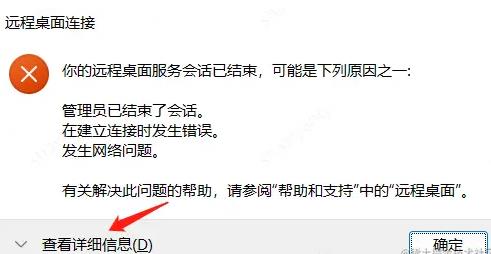This article brings you relevant knowledge about java, which mainly introduces the relevant content about the implementation principle of thread pool, including why to use thread pool and related content about the use of thread pool , let’s take a look at it, I hope it will be helpful to everyone.

java video tutorial"
1. Why use thread poolThe use of thread pools is usually due to the following two reasons:
- Frequently creating and destroying threads consumes system resources, and using thread pools can reuse threads.
- Using a thread pool makes it easier to manage threads. The thread pool can dynamically manage the number of threads, have blocking queues, execute tasks periodically, and environment isolation, etc.
/**
* @author 一灯架构
* @apiNote 线程池示例
**/
public class ThreadPoolDemo {
public static void main(String[] args) {
// 1. 创建线程池
ThreadPoolExecutor threadPoolExecutor = new ThreadPoolExecutor(
3,
3,
0L,
TimeUnit.MILLISECONDS,
new LinkedBlockingQueue(),
Executors.defaultThreadFactory(),
new ThreadPoolExecutor.AbortPolicy());
// 2. 往线程池中提交3个任务
for (int i = 0; i {
System.out.println(Thread.currentThread().getName() + " 关注公众号:一灯架构");
});
}
// 3. 关闭线程池
threadPoolExecutor.shutdown();
}
}
Output results:
pool-1-thread-2 关注公众号:一灯架构 pool-1-thread-1 关注公众号:一灯架构 pool-1-thread-3 关注公众号:一灯架构The use of thread pool is very simple:
- Call the new ThreadPoolExecutor() constructor, specify the core parameters, and create a thread pool.
- Call the execute() method to submit the Runnable task
- After use, call the shutdown() method to close the thread pool.
The thread pool has seven core parameters:
| Parameter meaning | ||
|---|---|---|
| Number of core threads | ||
| Maximum number of threads | ||
| Thread survival time | ||
| Time unit | ||
| Blocking queue | ||
| Thread creation factory | ||
| Rejection strategy |
| 状态名称 | 状态含义 | 状态作用 |
|---|---|---|
| RUNNING | 运行中 | 线程池创建后默认状态,接收新任务,并处理阻塞队列中的任务。 |
| SHUTDOWN | 已关闭 | 调用shutdown方法后处于该状态,不再接收新任务,处理阻塞队列中任务。 |
| STOP | 已停止 | 调用shutdownNow方法后处于该状态,不再新任务,并中断所有线程,丢弃阻塞队列中所有任务。 |
| TIDYING | 处理中 | 所有任务已完成,所有工作线程都已回收,等待调用terminated方法。 |
| TERMINATED | 已终止 | 调用terminated方法后处于该状态,线程池的最终状态。 |

5.3 execute源码
看一下往线程池中提交任务的源码,这是线程池的核心逻辑:
// 往线程池中提交任务
public void execute(Runnable command) {
// 1. 判断提交的任务是否为null
if (command == null)
throw new NullPointerException();
int c = ctl.get();
// 2. 判断线程数是否小于核心线程数
if (workerCountOf(c) <p>execute方法的逻辑也很简单,最终就是调用addWorker方法,把任务添加到worker集合中,再看一下addWorker方法的源码:</p><pre class="brush:php;toolbar:false">// 添加worker
private boolean addWorker(Runnable firstTask, boolean core) {
retry:
for (; ; ) {
int c = ctl.get();
int rs = runStateOf(c);
// 1. 检查是否允许提交任务
if (rs >= SHUTDOWN &&
!(rs == SHUTDOWN &&
firstTask == null &&
!workQueue.isEmpty()))
return false;
// 2. 使用死循环保证添加线程成功
for (; ; ) {
int wc = workerCountOf(c);
// 3. 校验线程数是否超过容量限制
if (wc >= CAPACITY ||
wc >= (core ? corePoolSize : maximumPoolSize))
return false;
// 4. 使用CAS修改线程数
if (compareAndIncrementWorkerCount(c))
break retry;
c = ctl.get();
// 5. 如果线程池状态变了,则从头再来
if (runStateOf(c) != rs)
continue retry;
}
}
boolean workerStarted = false;
boolean workerAdded = false;
Worker w = null;
try {
// 6. 把任务和新线程包装成一个worker
w = new Worker(firstTask);
final Thread t = w.thread;
if (t != null) {
// 7. 加锁,控制并发
final ReentrantLock mainLock = this.mainLock;
mainLock.lock();
try {
// 8. 再次校验线程池状态是否异常
int rs = runStateOf(ctl.get());
if (rs largestPoolSize)
largestPoolSize = s;
workerAdded = true;
}
} finally {
mainLock.unlock();
}
if (workerAdded) {
// 12. 启动线程
t.start();
workerStarted = true;
}
}
} finally {
if (!workerStarted)
addWorkerFailed(w);
}
return workerStarted;
}方法虽然很长,但是逻辑很清晰。就是把任务和线程包装成worker,添加到worker集合,并启动线程。
5.4 worker源码
再看一下worker类的结构:
private final class Worker
extends AbstractQueuedSynchronizer
implements Runnable {
// 工作线程
final Thread thread;
// 任务
Runnable firstTask;
// 创建worker,并创建一个新线程(用来执行任务)
Worker(Runnable firstTask) {
setState(-1);
this.firstTask = firstTask;
this.thread = getThreadFactory().newThread(this);
}
}5.5 runWorker源码
再看一下run方法的源码:
// 线程执行入口
public void run() {
runWorker(this);
}
// 线程运行核心方法
final void runWorker(Worker w) {
Thread wt = Thread.currentThread();
Runnable task = w.firstTask;
w.firstTask = null;
w.unlock();
boolean completedAbruptly = true;
try {
// 1. 如果当前worker中任务是null,就从阻塞队列中获取任务
while (task != null || (task = getTask()) != null) {
// 加锁,保证thread不被其他线程中断(除非线程池被中断)
w.lock();
// 2. 校验线程池状态,是否需要中断当前线程
if ((runStateAtLeast(ctl.get(), STOP) ||
(Thread.interrupted() &&
runStateAtLeast(ctl.get(), STOP))) &&
!wt.isInterrupted())
wt.interrupt();
try {
beforeExecute(wt, task);
Throwable thrown = null;
try {
// 3. 执行run方法
task.run();
} catch (RuntimeException x) {
thrown = x;
throw x;
} catch (Error x) {
thrown = x;
throw x;
} catch (Throwable x) {
thrown = x;
throw new Error(x);
} finally {
afterExecute(task, thrown);
}
} finally {
task = null;
w.completedTasks++;
// 解锁
w.unlock();
}
}
completedAbruptly = false;
} finally {
// 4. 从worker集合删除当前worker
processWorkerExit(w, completedAbruptly);
}
}runWorker方法逻辑也很简单,就是不断从阻塞队列中拉取任务并执行。
再看一下从阻塞队列中拉取任务的逻辑:
// 从阻塞队列中拉取任务
private Runnable getTask() {
boolean timedOut = false;
for (; ; ) {
int c = ctl.get();
int rs = runStateOf(c);
// 1. 如果线程池已经停了,或者阻塞队列是空,就回收当前线程
if (rs >= SHUTDOWN && (rs >= STOP || workQueue.isEmpty())) {
decrementWorkerCount();
return null;
}
int wc = workerCountOf(c);
// 2. 再次判断是否需要回收线程
boolean timed = allowCoreThreadTimeOut || wc > corePoolSize;
if ((wc > maximumPoolSize || (timed && timedOut))
&& (wc > 1 || workQueue.isEmpty())) {
if (compareAndDecrementWorkerCount(c))
return null;
continue;
}
try {
// 3. 从阻塞队列中拉取任务
Runnable r = timed ?
workQueue.poll(keepAliveTime, TimeUnit.NANOSECONDS) :
workQueue.take();
if (r != null)
return r;
timedOut = true;
} catch (InterruptedException retry) {
timedOut = false;
}
}
}推荐学习:《java视频教程》
The above is the detailed content of Understand the implementation principle of Java thread pool in one article. For more information, please follow other related articles on the PHP Chinese website!
 浅析server安装宝塔后出现不能远程的问题Nov 23, 2022 pm 04:56 PM
浅析server安装宝塔后出现不能远程的问题Nov 23, 2022 pm 04:56 PM本文由宝塔面板教程栏目给大家介绍关于server2022安装宝塔后出现不能远程的问题,不知道大家有没有遇到这样的问题呢?下面就带大家一起来看看我是怎么处理的吧!
 一文浅析Golang中的闭包Nov 21, 2022 pm 08:36 PM
一文浅析Golang中的闭包Nov 21, 2022 pm 08:36 PM闭包(closure)是一个函数以及其捆绑的周边环境状态(lexical environment,词法环境)的引用的组合。 换而言之,闭包让开发者可以从内部函数访问外部函数的作用域。 闭包会随着函数的创建而被同时创建。
 MySQL中怎么进行大文本存储压缩Feb 02, 2023 pm 08:23 PM
MySQL中怎么进行大文本存储压缩Feb 02, 2023 pm 08:23 PM对MySQL大文本数据存储进行简单的调研,通过牺牲部分CPU资源对数据压缩,使数据占用更小的空间,从而减少磁盘I/O和网络I/O
 count(*)为什么很慢?原因分析Jan 05, 2023 pm 09:21 PM
count(*)为什么很慢?原因分析Jan 05, 2023 pm 09:21 PMcount(*)为什么很慢?下面本篇文章就来给大家分析一下原因,并聊聊count(*)的执行过程,希望对大家有所帮助!
 了解一下Golang中的unsafe包Apr 02, 2023 am 08:30 AM
了解一下Golang中的unsafe包Apr 02, 2023 am 08:30 AM在一些底层的库中, 经常会看到使用 unsafe 包的地方。本篇文章就来带大家了解一下Golang中的unsafe包,介绍一下unsafe 包的作用和Pointer的使用方式,希望对大家有所帮助!
 用三行代码使你的git提交记录变干净Feb 28, 2023 pm 04:19 PM
用三行代码使你的git提交记录变干净Feb 28, 2023 pm 04:19 PM本篇文章给大家带来了关于git的相关知识,其中主要跟大家聊一聊怎么让你的git记录保持整洁,感兴趣的朋友下面一起来看一下吧,希望对大家有帮助。
 Node学习之如何最小化堆分配和防止内存泄漏Jan 11, 2023 pm 08:25 PM
Node学习之如何最小化堆分配和防止内存泄漏Jan 11, 2023 pm 08:25 PMNode.js如何查看内存泄漏?下面本篇文章带大家了解Nodejs堆分配,介绍一下如何最小化堆分配和防止内存泄漏,希望对大家有所帮助!


Hot AI Tools

Undresser.AI Undress
AI-powered app for creating realistic nude photos

AI Clothes Remover
Online AI tool for removing clothes from photos.

Undress AI Tool
Undress images for free

Clothoff.io
AI clothes remover

AI Hentai Generator
Generate AI Hentai for free.

Hot Article

Hot Tools

Atom editor mac version download
The most popular open source editor

DVWA
Damn Vulnerable Web App (DVWA) is a PHP/MySQL web application that is very vulnerable. Its main goals are to be an aid for security professionals to test their skills and tools in a legal environment, to help web developers better understand the process of securing web applications, and to help teachers/students teach/learn in a classroom environment Web application security. The goal of DVWA is to practice some of the most common web vulnerabilities through a simple and straightforward interface, with varying degrees of difficulty. Please note that this software

VSCode Windows 64-bit Download
A free and powerful IDE editor launched by Microsoft

SecLists
SecLists is the ultimate security tester's companion. It is a collection of various types of lists that are frequently used during security assessments, all in one place. SecLists helps make security testing more efficient and productive by conveniently providing all the lists a security tester might need. List types include usernames, passwords, URLs, fuzzing payloads, sensitive data patterns, web shells, and more. The tester can simply pull this repository onto a new test machine and he will have access to every type of list he needs.

SAP NetWeaver Server Adapter for Eclipse
Integrate Eclipse with SAP NetWeaver application server.








